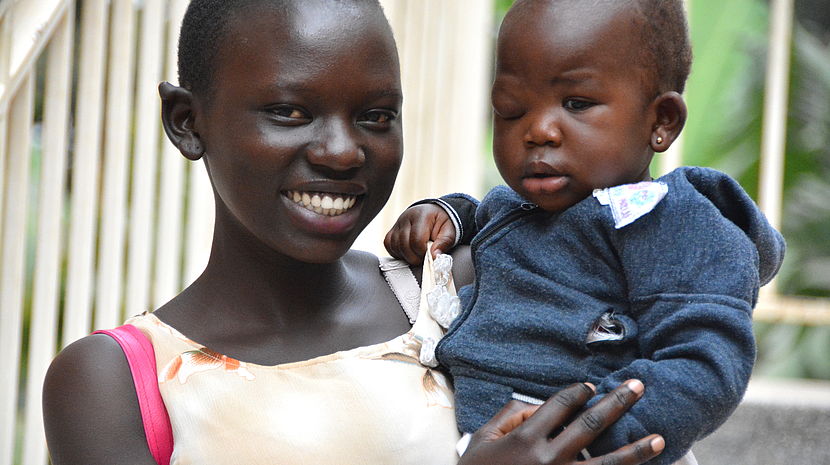Gender and the European Union: a commitment towards leaving no one behind

The European Union (EU) is the biggest donor of development aid and the first regional body to sign and ratify the UN Convention on the Rights of Persons with Disabilities (UN CRPD). In celebration of International Women’s Day, in this article, Alba Gonzalez, EU policy officer with CBM's International Advocacy and Alliances department outlines steps the EU is taking to include women and girls with disabilities in it’s work on gender.
EU and Gender : Background
The European Union (EU) is the biggest donor of development aid and the first regional body to sign and ratify the UN Convention on the Rights of Persons with Disabilities (UN CRPD). Its commitment to Gender Equality was developed with the establishment of the Gender Equality and Women’s Empowerment EU Plan of Action 2010 – 2015, which was known in the EU as the Gender Action Plan (GAP).
GAP had the objective of strengthening EU commitment on Gender Equality “as a human right, a question of social justice and a core valueof the EU development policy. Bearing in mind that gender equality is not only a goal in itself but also central in achieving all MDGs…” At the same time that the GAP was developed, the European Disability Strategy 2010 – 2020 was established as a tool to implement the UN CRPD. This strategy included eight main objectives: Accessibility, Participation, Equality, Employment, Education and Training, Social Protection, Health and External Actions. Discrimination based on gender and disability was mentioned under Equality objective: “The Commission will also pay attention to the cumulative impact of discrimination that people with disabilities may experience on other grounds, such as nationality, age, race or ethnicity, sex, religion or belief, or sexual orientation.”
Despite the timeframe of both frameworks, disability was not mentioned in the GAP, and this was taken into account in the Evaluation of EU Support to Gender Equality and Women’s Empowerment in Partner Countries, published in April 2015. As a lesson learnt, the EU considered that “cross-cutting issues such as gender equality, disability, HIV/AIDS, governance and environment should be taken into account under all four areas of intervention.” Disability was, therefore, highlighted as one of the key components to achieve, including data disaggregation by gender on education and literacy, health and mortality, disability, employment and income.
2015: A new opportunity
The adoption of the Sendai Framework on Disaster Risk Reduction and the 2030 Agenda for Sustainable Development in 2015 raised gender equality as essential objective to achieve sustainable development for all.
At the same time, the EU went through the process of the review of the implementation on the UN Convention on the Rights of Persons with Disabilities. In the Concluding Observations, the UN CRPD Committee Members recommended the EU to “mainstream women and girls with disabilities’ perspective in its forthcoming Gender Equality Strategy, policies and programmes, as well as a gender perspective in its disability strategies.” The EU was also asked to lead on the implementation of Sendai Framework and 2030 Agenda, as it was one of the main promoters of the inclusion of the rights of persons with disabilities during the negotiations of both frameworks.
In September 2015, the European Commission (EC) published the Joint Staff Document on Gender Equality and Women’s Empowerment: Transforming the Lives of Girls and Women through EU External Relations 2016 – 2020, which is known as GAP II as it was established as a continuation of the first GAP. This time, disability was mentioned as a factor which leads to multiple discrimination, as well as the need of women and girls with disabilities to take control over decisions that affect them and over resources at all levels. However, the specific priorities, objectives, activities or indicators included in the GAP II do not include any reference to women and girls with disabilities. Despite the commitment expressed by the EU, there is a lack of concrete actions for the implementation of the UN CRPD.
Policies and programmes focused on general population will not benefit the whole population. However, inclusive policies and projects will benefit the whole population, including women, men, girls and boys with disabilities. The EU will be a key actor for the implementation of the 2030 agenda. CBM will keep reminding the EU that no one should left behind, regardless of gender, disability or other factors. This will make the difference in poverty eradication, as poverty and discrimination are deeply interconnected.